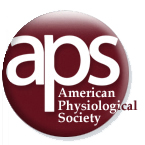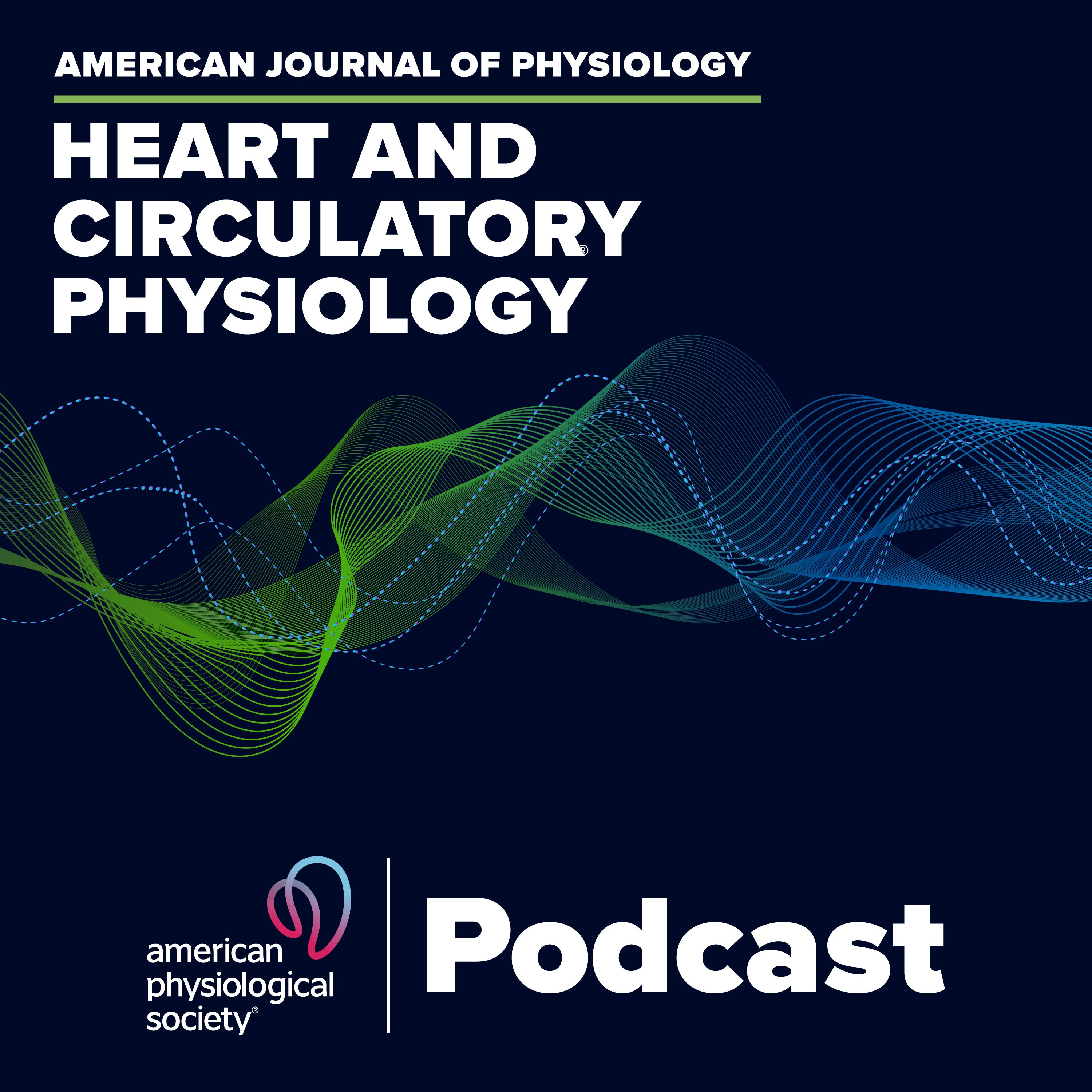Episodes

Thursday Oct 04, 2012
Gene and Cytokine Therapy for Heart Failure
Thursday Oct 04, 2012
Thursday Oct 04, 2012
The Editors of AJP-Heart and Circulatory Physiology are excited to present our first ever podcast in both English and Japanese! Associate Editor Masafumi Kitakaze interviews lead author Toshio Nagai (Chiba University) and Editorial Board member Takashi Matsui (University of Hawaii) about the new Review article by Nagai and Komuro on cutting-edge research involving gene and cytokine therapies for heart failure. We cover everything from the molecular level to clinical trials, in two languages!
Toshio Nagai and Issei Komuro Gene and cytokine therapy for heart failure: molecular mechanisms in the improvement of cardiac function Am J Physiol Heart Circ Physiol, published online July 9, 2012, doi: 10.1152/ajpheart.00130.2012.

Thursday Oct 04, 2012
JAPANESE VERSION: Gene and Cytokine Therapy for Heart Failure
Thursday Oct 04, 2012
Thursday Oct 04, 2012
Listen to our Japanese language podcast on the Review article by Toshio Nagai and Issei Komuro.
Toshio Nagai and Issei Komuro Gene and cytokine therapy for heart failure: molecular mechanisms in the improvement of cardiac function Am J Physiol Heart Circ Physiol, published online July 9, 2012, doi: 10.1152/ajpheart.00130.2012.

Wednesday Sep 19, 2012
Vascular Effects of Maternal Alcohol Consumption
Wednesday Sep 19, 2012
Wednesday Sep 19, 2012
What are the effects of drinking alcohol during pregnancy on the mother’s cardiovascular system? The simple answer is that we are still trying to find out. Research has long focused on fetal alcohol spectrum disorders, but little research has been done on the effects of both acute and chronic alcohol consumption on the maternal circulation that might contribute to pregnancy disorders such as preeclampsia and gestational diabetes and to long term effects on the offspring. For a review of this emerging field, listen to our latest podcast as Associate Editor Nancy Kanagy interviews lead author Jayanth Ramadoss (University of Texas Medical Branch) and expert William Mayhan (LSU Health Sciences Center) about the recent review by Ramadoss and Magness.
Jayanth Ramadoss and Ronald R. Magness Vascular effects of maternal alcohol consumption Am J Physiol Heart Circ Physiol, published online June 22, 2012, doi: 10.1152/ajpheart.00127.2012.

Friday Sep 07, 2012
Microcalcifications in Vulnerable Plaque Rupture
Friday Sep 07, 2012
Friday Sep 07, 2012
What are the actual mechanisms of plaque rupture? How can we integrate the new findings by Maldonado et al in the context of a threshold for rupture of vulnerable plaque? In this podcast, Associate Editor Ivor Benjamin interviews senior author Sheldon Weinbaum (The City College of the City University of New York) and leading expert Linda Demer (UCLA School of Medicine) about the work by Weinbaum and colleagues on coronary artery calcification and the use of microCT to identify microcalcifications. Are microcalcifications the "smoking gun" for triggering inflammation-induced atherosclerosis? Listen now.
Natalia Maldonado, Adreanne Kelly-Arnold, Yuliya Vengrenyuk, Damien Laudier, John T Fallon, Renu Virmani, Luis Cardoso, and Sheldon Weinbaum A mechanistic analysis of the role of microcalcifications in atherosclerotic plaque stability - potential implications for plaque rupture Am J Physiol Heart Circ Physiol, published online July 9, 2012, doi: 10.1152/ajpheart.00036.2012.

Wednesday Aug 01, 2012
Ischemic Preconditioning and Exercise-Induced Endothelium-Dependent Function
Wednesday Aug 01, 2012
Wednesday Aug 01, 2012
What do elite athletes and remote preconditioning have in common? With the 2012 London Olympic Games underway, our Consulting Editor David Gutterman interviews lead author Dick Thijssen (Liverpool John Moores University) and expert Michael Widlansky (Medical College of Wisconsin) about the work by Bailey et al, which investigates how a preconditioning ischemic stimulus applied to the legs could provide protection against endothelial dysfunction in the arms after intense exercise. Could the observation that improved performance times on a 5K run after remote preconditioning lead to new training techniques to improve performance for Olympic athletes? Is this tantamount to doping? Listen in and find out.
Tom G. Bailey, Gurpreet K. Birk, N. Timothy Cable, Greg Atkinson, Daniel J. Green, Helen Jones, and Dick H.J. Thijssen Remote Ischemic Preconditoning Prevents Reduction in Brachial Artery Flow Mediated Dilation after Strenuous Exercise Am J Physiol Heart Circ Physiol, published online June 22, 2012, doi: 10.1152/ajpheart.00272.2012.

Tuesday Jul 31, 2012
Cell-Based Therapy for Prevention and Reversal of Myocardial Remodeling
Tuesday Jul 31, 2012
Tuesday Jul 31, 2012
Where are the prospects for cell-based therapies for myocardial infarction and heart failure? Listen as Editor in Chief William C. Stanley discusses stem cell therapies for heart disease and the new Review article by Karantalis et al with senior author Joshua Hare (University of Miami) and leading expert Jianyi (Jay) Zhang (University of Minnesota). This paper thoroughly examines cell-based therapies for treatment of acute myocardial infarction and chronic ischemic cardiomyopathy. What are the prospects for moving cell therapies out of the lab and into routine clinical practice?
Vasileios Karantalis, Wayne Balkan, Ivonne Hernandez Schulman, Konstantinos Hatzistergos, and Joshua M. Hare Cell-Based Therapy for Prevention and Reversal of Myocardial Remodeling Am J Physiol Heart Circ Physiol, published online May 25, 2012, doi: 10.1152/ajpheart.00221.2012.

Friday Jul 13, 2012
Physiological Aspects of Cardiac Tissue Engineering
Friday Jul 13, 2012
Friday Jul 13, 2012
How do you grow cardiac muscle in a dish? Listen as myocardial tissue engineering pioneer Thomas Eschenhagen (University Medical Center Hamburg Eppendorf) talks with Associate Editor Leon de Windt and leading expert Pieter Doevendans (University of Utrecht Medical Centre) about the evolution of cardiac tissue engineering. From humble beginnings in chick embryonic cardiomyocytes to current state-of-the-art techniques with human tissue, we explore the development of engineered myocardium for drug screening and clinical applications.
Thomas Eschenhagen, Alexandra Eder, Ingra Vollert, and Arne Hansen Physiological Aspects of Cardiac Tissue Engineering Am J Physiol Heart Circ Physiol, published online May 11, 2012, doi: 10.1152/ajpheart.00007.2012.

Thursday Jun 28, 2012
Post-translational Modifications of Cardiac Proteasomes
Thursday Jun 28, 2012
Thursday Jun 28, 2012
What are the big questions surrounding our understanding of post-translational modifications (PTMs) of proteasomes? Associate Editor Meredith Bond interviews lead author Nobel Zong (UCLA) and expert Xuejun Wang (University of South Dakota) about the latest Review article by Scruggs et al from the lab of Peipei Ping and colleagues. Why are the reversible and permanent PTMs of proteasomes critical to our understanding of cardiac physiology? How will we correlate changes in PTMs of proteasomes with pathological and physiological changes in heart function? How will we deal with the increasingly large data sets generated? Listen now…
Sarah B. Scruggs, Nobel C. Zong, Ding Wang, Enrico Stefani, and Peipei Ping Post-translational Modification of Cardiac Proteasomes: Functional Delineation Enabled by Proteomics Am J Physiol Heart Circ Physiol, published online April 20, 2012, doi: 10.1152/ajpheart.00189.2012.

Tuesday Jun 26, 2012
Thromboxane A2-induced Vasoconstriction in Pregnant Rats
Tuesday Jun 26, 2012
Tuesday Jun 26, 2012
The vascular physiology of pregnancy still provide us with surprising observations. In our latest podcast, Associate Editor Nancy Kanagy interviews author Stella Goulopoulou (Georgia Health Sciences University) and leading expert George Osol (University of Vermont College of Medicine) about the new research published by Goulopoulou and colleagues. This work found that the contractile response to thromboxane in uterine arteries is mediated by a surprisingly unique signal transduction pathway. Will further exploration lead to new therapeutic targets for vascular abnormalities in pregnancy during conditions such as preeclampsia? Listen in and find out.
Styliani Goulopoulou, Johanna L. Hannan, Takayuki Matsumoto, and R. Clinton Webb Pregnancy reduces RhoA/Rho kinase and protein kinase C signaling pathways downstream of thromboxane receptor activation in rat uterine artery Am J Physiol Heart Circ Physiol, published online April 27, 2012, doi:10.1152/ajpheart.00900.2011.

Friday Jun 01, 2012
Cerebrovascular Response After Long Duration Spaceflight
Friday Jun 01, 2012
Friday Jun 01, 2012
We tackle our most unique topic yet-- long duration spaceflight! In the micro-gravity environment of spaceflight, fluid shifts from the feet to the head. Over time this fluid shift increases pressure in the brain, a particular concern for long duration spaceflight astronauts. Listen as Consulting Editor John Longhurst interviews senior author Richard Hughson (University of Waterloo) and leading expert Ronney Panerai (University of Leicester) about alterations in cerebrovascular function pre- and post- long duration spaceflight, including anecdotes about the challenges of experiments involving astronauts in both the U.S.A. and Russia.
Kathryn A. Zuj, Philippe Arbeille, J. Kevin Shoemaker, Andrew P. Blaber, Danielle K. Greaves, Da Xu, and Richard L. Hughson Impaired cerebrovascular autoregulation and reduced CO2 reactivity after long duration spaceflight Am J Physiol Heart Circ Physiol, published online April 6, 2012, doi: 10.1152/ajpheart.00029.2012.

